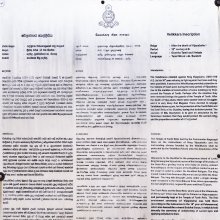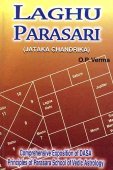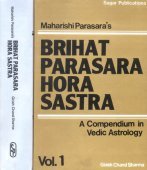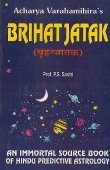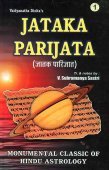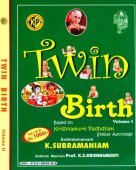Taca, Tācā: 6 definitions
Introduction:
Taca means something in Buddhism, Pali, Marathi, Tamil. If you want to know the exact meaning, history, etymology or English translation of this term then check out the descriptions on this page. Add your comment or reference to a book if you want to contribute to this summary article.
Images (photo gallery)
In Buddhism
Mahayana (major branch of Buddhism)
Source: Wisdom Library: Maha Prajnaparamita SastraTaca (तच) is Pali for “skin” (Sanskrit Tvac) refers to one of the thirty-substances of the human body according to the Visuddhimagga, as mentioned in an appendix of the 2nd century Mahāprajñāpāramitāśāstra chapter 32-34. The Mahāprajñāpāramitāśāstra mentions thirty-six substances [viz., taca]; the Sanskrit sources of both the Lesser and the Greater Vehicles, physical substances are 26 in number while the Pāli suttas list thirty-once substances.

Mahayana (महायान, mahāyāna) is a major branch of Buddhism focusing on the path of a Bodhisattva (spiritual aspirants/ enlightened beings). Extant literature is vast and primarely composed in the Sanskrit language. There are many sūtras of which some of the earliest are the various Prajñāpāramitā sūtras.
Languages of India and abroad
Pali-English dictionary
Source: BuddhaSasana: Concise Pali-English Dictionarytaca : (m.) skin; bark; hide.
Source: Sutta: The Pali Text Society's Pali-English DictionaryTaca, (& taco nt.) (Vedic tvak (f.), Gen. tvacaḥ) 1. bark. ‹-› 2. skin, hide (similar to camma, denoting the thick, outer skin, as contrasted with chavi, thin skin, see chavi & cp. J. I, 146).—1. bark: M. I, 198, 434, 488; A. V, 5.—2. skin: often used together with nahāru & aṭṭhi (tendons & bones), to denote the outer appearance (framework) of the body, or that which is most conspicuous in emaciation: A. I, 50=Sdhp. 46; tacamaṃsâvalepana (+aṭṭhī nahārusaṃyutta) Sn. 194= J. I, 146 (where °vilepana); SnA 247; aṭṭhi-taca-mattâvasesasarīra “nothing but skin & bones” PvA. 201. ‹-› Of the cast-off skin of a snake: urago va jiṇṇaṃ tacaṃ jahāti Sn. 1, same simile Pv. I, 121 (=nimmoka PvA. 63).—kañcanasannibha-taca (adj.) of golden-coloured skin (a sign of beauty) Sn. 551; Vv 302=323; Miln. 75; VvA. 9.—valita-tacatā a condition of wrinkled skin (as sign of age) Nd2 252≈; Kh III, ; KhA 45; Sdhp. 102.

Pali is the language of the Tipiṭaka, which is the sacred canon of Theravāda Buddhism and contains much of the Buddha’s speech. Closeley related to Sanskrit, both languages are used interchangeably between religions.
Marathi-English dictionary
Source: DDSA: The Molesworth Marathi and English Dictionaryṭaca (टच).—n C The proper or the appointed time or period (of a work or an action): the season, the period of ripeness or readiness.
--- OR ---
ṭaca (टच).—f (Common amongst goldsmiths, esp. at Bombay. From Touch.) Quality of gold.
--- OR ---
ṭāca (टाच) [or टांच, ṭāñca].—f The heel. uñca ṭāca karūna vāgaṇēṃ or ṭācēlā mātī or maḷa na lāgū dēṇēṃ (To walk with elevated heel, so as to tread upon no dirty thing.) To conduct one's self heedfully and holily; to walk as "harmless and blameless."
--- OR ---
ṭācā (टाचा) [or टांचा, ṭāñcā].—a Short or scant--a garment &c. 2 Of deficient girth or width.
--- OR ---
ṭācā (टाचा) [or टांचा, ṭāñcā].—m A stitch. v māra, dē, ghē. ṭācā dēṇēṃ jibhēsa-pōṭāsa To restrain or tie up (the tongue from speaking, the belly from getting food).
Source: DDSA: The Aryabhusan school dictionary, Marathi-Englishṭaca (टच).—n The proper or the appointed time or period. Quality of gold.
--- OR ---
ṭaca (टच) [-kan-kara-dinī-diśī, -कन्-कर-दिनी-दिशी].—ad Used with verbs of pricking, lancing, &c.
--- OR ---
ṭāca (टाच) [or ṭāñca, or टांच].—f The heel.
--- OR ---
ṭācā (टाचा) [or ṭāñcā, or टांचा].—a Short or scant. Of de- ficient girth or width.
--- OR ---
ṭācā (टाचा) [or ṭāñcā, or टांचा].—m A stitch v māra dē, ghē. ṭācā dēṇēṃ, jibhēsa-pōṭāsa To restrain or tie up (the tongue from speaking, the belly from getting food).
Marathi is an Indo-European language having over 70 million native speakers people in (predominantly) Maharashtra India. Marathi, like many other Indo-Aryan languages, evolved from early forms of Prakrit, which itself is a subset of Sanskrit, one of the most ancient languages of the world.
Tamil dictionary
Source: DDSA: University of Madras: Tamil LexiconTaca (தச) noun < daśan. Ten; பத்து. எண்ணித் தசவென் றிடுகென்றான் [pathu. ennith thasaven ridugenran] (நளவெண்பா கலிநீ. [nalavenpa kalini.] 9).
--- OR ---
Taca (தச) verb < daśa impersonal of daś. A Sanskrit word meaning 'bite'; 'கடிப்பாய்' என் னும் பொருள்கொண்ட ஒரு வடசொல். ['kadippay' en num porulkonda oru vadasol.] (நளவெண்பா கலிநீ. [nalavenpa kalini.] 9).
--- OR ---
Tācā (தாசா) noun < Urdu tāzā. Enthusiasm. See தாஜா. அவனைத் தாசாப்படுத்துகிறான். [thaja. avanaith thasappaduthugiran.] (W.)
Tamil is an ancient language of India from the Dravidian family spoken by roughly 250 million people mainly in southern India and Sri Lanka.
See also (Relevant definitions)
Starts with (+75): Taca-Kana-Kara-Dini-Dishim, Taca-mahaca gum, Taca-pantainam, Taca-picaenal, Taca-rattiranati, Taca-taca, Tacaca, Tacacanem, Tacacanti, Tacachilla, Tacacilam, Tacacuna, Tacagandha, Tacai, Tacaikkani, Tacaipiti, Tacaipparru, Tacaippu, Tacaivaippu, Tacaivali.
Ends with (+14): Antaca, Atthitaca, Cumataca, Gerataca, Gharaca Na Ghataca, Harittaca, Hataca, Hitaca, Jataca, Jerataca, Kadamattaca, Kadeshevataca, Kanakataca, Kanakattaca, Khadya-ghataca, Kittaca, Kutaca, Maracutaca, Muiracutaca, Muphataca.
Full-text (+178): Dhasa, Dasa, Tacamacala, Cashtiyankicam, Tacacanem, Dhasadhasanem, Taca-taca, Tacarum, Tacatacanem, Dhasakata, Tancalanem, Tacalanem, Poruttaccuvati, Kalayasa, Dhas, Taca-mahaca gum, Ardhanava, Piranan, Tathagata Bala, Nakha.
Relevant text
Search found 55 books and stories containing Taca, Dasa, Dhasa, Ṭaca, Ṭāca, Ṭācā, Tācā, Thaasaa, Thacha, Thasa; (plurals include: Tacas, Dasas, Dhasas, Ṭacas, Ṭācas, Ṭācās, Tācās, Thaasaas, Thachas, Thasas). You can also click to the full overview containing English textual excerpts. Below are direct links for the most relevant articles:
Maha Prajnaparamita Sastra (by Gelongma Karma Migme Chödrön)
Appendix 3 - Thirty-two substances of the human body < [Chapter XXXII-XXXIV - The eight classes of supplementary dharmas]
Note (1): The Daśabalasūtra < [Chapter XXXIX - The Ten Powers of the Buddha according to the Abhidharma]
Preliminary note to liberations, masteries and totalities < [Class (5) liberations, (6) masteries and (7) totalities]
Tattvartha Sutra (with commentary) (by Vijay K. Jain)
Verse 9.21 - The subdivisions of internal austerities (ābhyantara-tapa) < [Chapter 9 - Stoppage and Shedding of Karmas]
Verse 9.24 - The ten subdivisions of respectful service (vaiyāvṛttya) < [Chapter 9 - Stoppage and Shedding of Karmas]
Verse 4.38 - The minimum lifetime of the peripatetic beings (vyantara-deva) < [Chapter 4 - The Celestial Beings]
A Manual of Abhidhamma (by Nārada Thera)
Stages of Mental Culture < [Chapter IX - Mental Culture]
Introductory Verse < [Chapter VII - Abhidhamma Categories]
Suitability of Subjects for Different Temperaments < [Chapter IX - Mental Culture]
Sanskrit sources of Kerala history (by Suma Parappattoli)
2. Balamartandavijaya by Devaraja-suri < [Chapter 5 - Sanskrit Dramas and Campus bearing on Kerala History]
6.3. Kesavadasa Prasasti < [Chapter 2 - Historical details from Mahatmyas and Prashastis]
Bihar and Eastern Uttar Pradesh (early history) (by Prakash Narayan)
The Household Group < [Chapter 4 - Social Process, Structures and Reformations]
Clans and Gana-Sanghas < [Chapter 1 - Political Formation at the time of Buddha]
The Significance of the Gahapati in the Buddhist View of Stratification < [Chapter 4 - Social Process, Structures and Reformations]
Related products
(+3 more products available)
